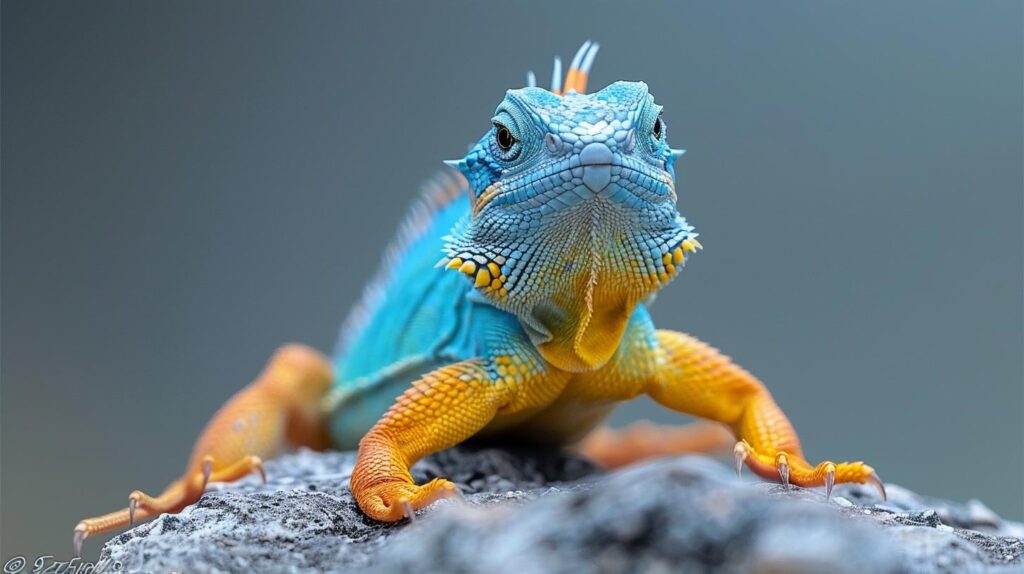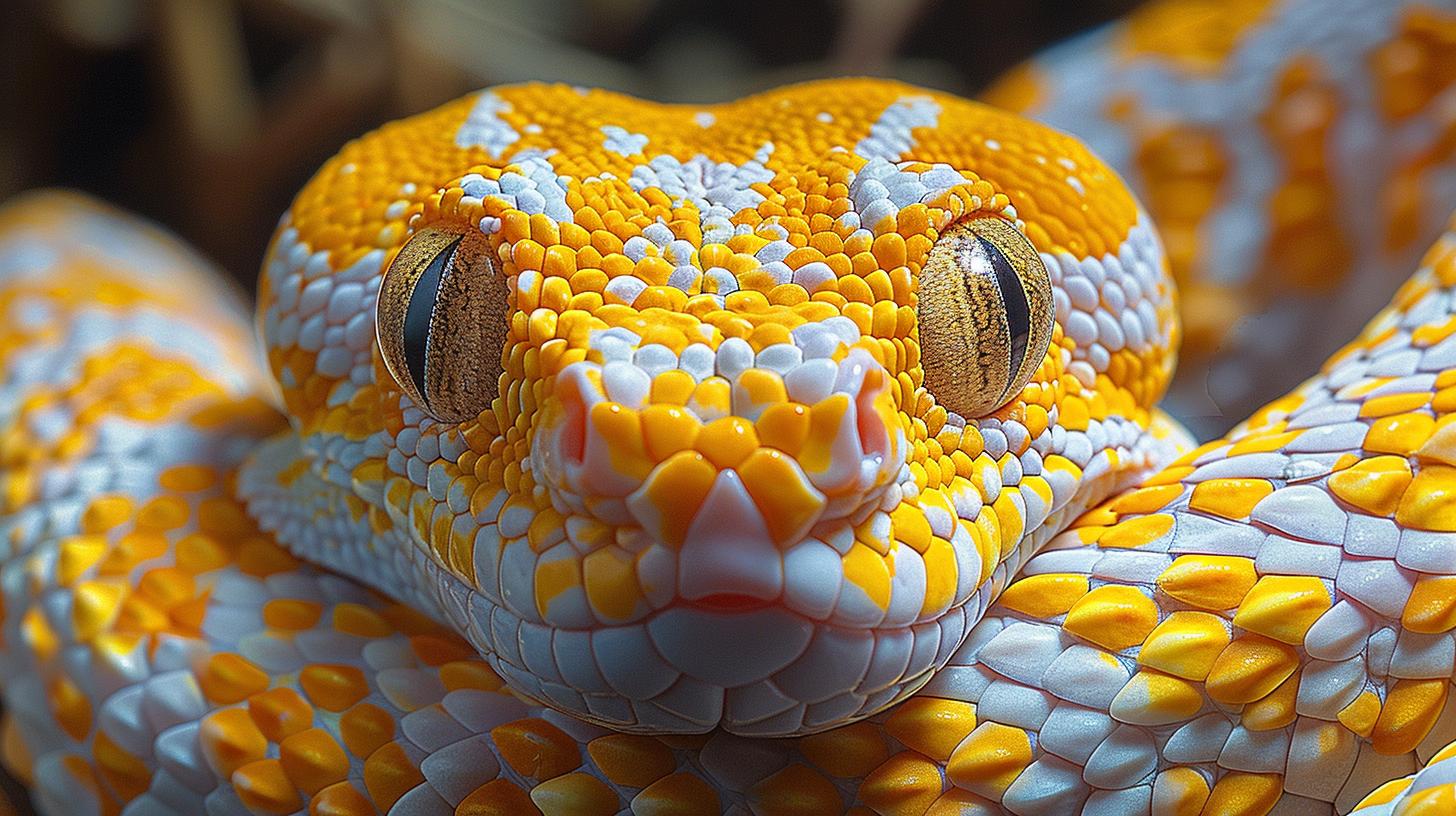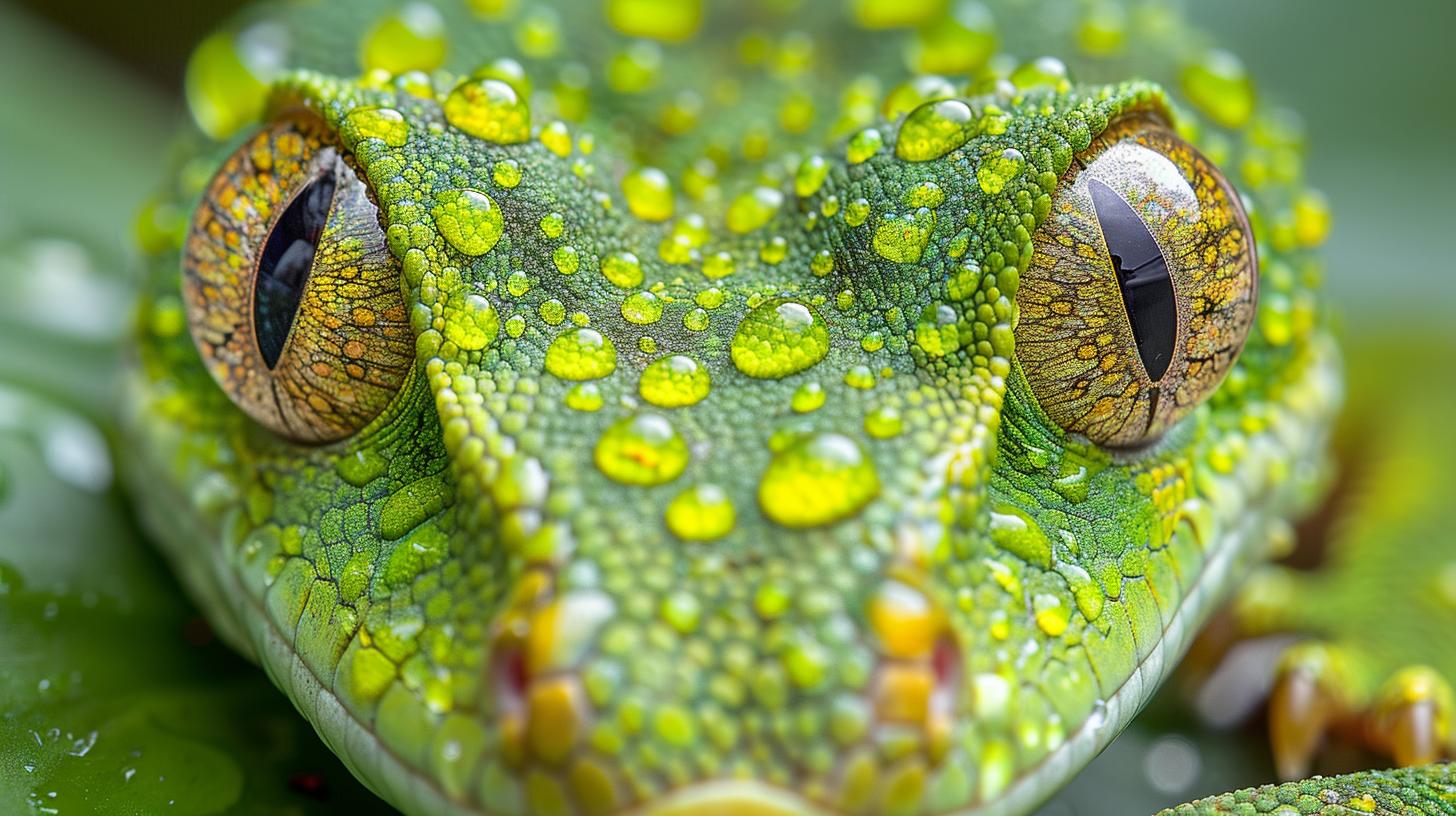Ensuring Proper Calcium Intake for Healthy Reptile Bones

The Vital Role of Calcium in Reptile Health
Understanding the essentials of reptile calcium intake is fundamental in ensuring the sustained health and vitality of these mesmerizing creatures. As homeowners open their hearts and homes to diverse reptilian species, recognizing the pivotal role of calcium transcends beyond common knowledge.
It becomes an indispensable part of nurturing their well-being. Whether it's a vibrant bearded dragon basking under a heat lamp or a sleek gecko navigating the terrarium's intricate landscape, calcium remains a cornerstone nutrient instrumental for their flourishing existence.
Calcium's profound influence on reptilian health stems from its direct impact on bone structure and physiological functions. Acting as the backbone nutrient essential for maintaining strong skeletal integrity, it also plays a crucial role in nerve function, muscle contractions, and even clotting blood - demonstrating its multifaceted importance. A deficiency in this crucial mineral can herald serious health implications, ranging from mild lethargy to severe metabolic bone disease (MBD), making awareness and prevention through adequate intake paramount for caretakers.
Identifying signs of calcium deficiency early on enables proactive management and can significantly deter long-term consequences. Symptoms showcasing inadequate levels might initially appear subtle; however, recognizing these warning indicators - such as diminished energy levels, weakened bodily structures, or more overt manifestations like MBD - is critical. This foresight not only bolsters immediate intervention strategies but ensures that these captivating beings continue to thrive under attentive care.
Subsequently, exploring how reptiles acquire their necessary calcium sheds light on effective dietary planning that aligns with natural instincts while accommodating the constraints of captivity. Whether integrating natural sources reminiscent of their wild counterparts' diets or supplementing with commercially available products designed for captive consumption, achieving a balanced approach caters to fulfilling their intricate nutritional landscape.
This balance is imperative in sculpting a regimen that closely mirrors the richness and diversity of their natural habitat's offering, guaranteeing optimal health outcomes.
Signs of Calcium Deficiency in Reptiles
Ensuring that reptiles have adequate reptile calcium intake is critical for their health and longevity. However, recognizing the signs of calcium deficiency is equally important as it can lead to severe health complications if not addressed timely.
Symptoms such as lethargy, decreased appetite, and weakened bones are often the first indicators that a reptile is suffering from inadequate calcium levels. These symptoms can escalate to more severe conditions like metabolic bone disease (MBD), characterized by softening of the bones due to improper calcium metabolism.
Moreover, issues such as impaired nerve function leading to difficulty in moving or even paralysis can be observed in extreme cases. For reptile keepers, understanding that these physical manifestations signal a shortfall in calcium intake can be the difference between a thriving pet and one facing potentially life-threatening challenges. To prevent these serious outcomes, it's imperative to regularly monitor your reptile's condition and act swiftly at the first sign of distress.
| Symptom | Possible Cause |
|---|---|
| Lethargy | Low Calcium Intake |
| Weak Bones | Calcium Deficiency / Metabolic Bone Disease |
| Paralysis or Difficulty Moving | Severe Calcium Deficiency Impacting Nerve Function |
Enhancing your reptile's diet with adequate sources of calcium either through natural food items rich in this nutrient or through supplements is essential. It is also beneficial to consult with a veterinarian specialized in exotic pets who can offer guidance on handling calcium deficiency and preventing its recurrence.
This proactive approach towards maintaining optimal levels of reptile calcium intake not only addresses immediate health concerns but also paves the way for discussing preventive measures to ensure such issues do not arise in the future.
How Reptiles Obtain Calcium
Understanding the pathways through which reptiles meet their calcium needs is essential for any reptile owner committed to the health and longevity of their pet. In the wild, reptiles have access to a variety of natural sources that fulfill their nutritional requirements, including calcium.
However, the controlled environments in which many pet reptiles live can limit their access to these vital resources. This juxtaposition underscores the importance of informed dietary planning and supplementation to prevent calcium deficiency, which is crucial for maintaining robust bone health and overall vitality.
Reptiles obtain calcium through a combination of natural food sources, prey items, and if necessary, supplements. For captive reptiles especially, it's vital that owners understand not only how much calcium their pets need but also the most effective ways to provide it. Balancing natural sources with supplementary options ensures that reptiles receive the right amount of this critical nutrient. Without it, they risk developing serious health issues such as metabolic bone disease-a common ailment in calcium-deficient reptiles.
Natural Sources in the Wild
In their native habitats, reptiles come across various natural food items rich in calcium These include small mammals, insects, leafy greens, and even certain types of fruits. Carnivorous species like snakes derive ample calcium from their prey's skeletal structure.
In contrast, herbivorous species rely on vegetation with high mineral content to meet their reptile calcium intake Owners can mimic these diets by providing a mix of fresh produce and appropriately sized prey items that replicate what each species would typically consume in its natural environment.
Dietary Supplementation for Captive Reptiles
The challenge arises when trying to replicate these rich dietary conditions within a terrarium or other captivity setup. This is where dietary supplements become invaluable. Calcium powder is widely available and can easily be dusted over feeder insects or mixed into vegetation. It's important that these supplements do not replace natural food sources but rather enhance them ensuring reptile health is optimized without risking over-supplementation.
Moreover, it's essential for owners to recognize that not all supplements are created equal; some contain added Vitamin D3 to aid in calcium absorption-a crucial consideration for species without regular exposure to UVB lighting necessary for endogenous vitamin D synthesis. Selecting a supplement tailored specifically for a *reptile's* dietary needs can make all the difference in preventing deficiencies and promoting a long and healthy life.

By combining knowledgeable dietary planning with careful supplementation practices, owners can significantly impact their pets' nutritional well-being. Understanding how reptiles obtain calcium through both natural sources and thoughtful supplementation offers a solid foundation upon which owners can build a diet that supports strong bones and vibrant health.
Reptile Calcium Intake
Determining the right amount of calcium for your reptile is a nuanced process that hinges on various factors. Unlike other pets, *reptiles* have unique dietary needs that vary significantly across species, age, and even the environment they live in.
Understanding these variables is key to ensuring your reptile receives the optimal level of reptile calcium intake for bone health and bodily functions. It's not a one-size-fits-all scenario; what works for a juvenile bearded dragon might not suffice for an adult tortoise.
At the heart of this discussion is the realization that calcium plays a pivotal role in a reptile's health, influencing everything from bone density to nerve function. A calcium deficiency can precipitate serious health issues, such as metabolic bone disease-a common ailment in captive reptiles lacking adequate calcium and sunlight exposure. This brings us to the question: how do you calculate the necessary calcium dosage?
The answer begins with understanding your reptile's specific needs based on its species, age, size, and dietary habits. Here are some general guidelines to consider:
- Juvenile and growing reptiles: These need higher calcium intakes due to their rapid growth rates.
- Pregnant or egg-laying females: Require increased calcium to ensure healthy egg development.
- Species with higher metabolic rates: Typically need more calcium compared to those with slower metabolisms.
But understanding your reptile's requirements is just the start. Implementing this knowledge effectively involves offering a balanced diet supplemented with calcium when natural sources fall short. Many reptile owners turn to supplements to dust feeder insects or mix with food items, ensuring their pets receive enough of this crucial mineral. However, it's critical not just to focus on quantity but also on absorption factors-key among them being Vitamin D3 levels which facilitate calcium uptake in reptiles.
The topic of reptile calcium intake invites further exploration into how balance can be achieved between natural dietary sources and supplements while considering individual differences among reptiles. The complexity increases when factoring in other elements such as phosphorus - another mineral essential for health but one that must remain in proper ratio with calcium to avoid absorption issues.
Moving ahead, we will delve into strategies around integrating calcium into your reptile's diet efficiently without disrupting their meal preferences or causing undue stress-an endeavor requiring patience, insight, and continuous learning from caretakers committed to optimal animal welfare.
The Synergy of Calcium and Vitamin D3
Understanding the synergistic relationship between calcium and Vitamin D3 is tantamount to ensuring the longevity and health of reptiles. These two nutrients work in tandem, much like a lock and key mechanism, to support vital physiological functions-particularly bone health. Calcium, as we have established, is a crucial mineral for developing and maintaining strong skeletal structures.
However, without adequate levels of Vitamin D3, the effectiveness of calcium absorption into the bloodstream drastically decreases. This segment delves into how reptiles synthesize this essential vitamin naturally and its pivotal role in reptile calcium intake management.
Optimizing Vitamin D3 Synthesis
Reptiles possess the unique ability to produce Vitamin D3 through exposure to ultraviolet B (UVB) light, either from natural sunlight or specifically designed artificial lighting sources. When their skin is exposed to UVB rays, it initiates a chemical reaction that ultimately converts cholesterol in the body into previtamin D3. However, for this conversion process to be successful, providing an optimal environment mimicking their natural habitat is essential.
It includes ensuring they receive sufficient UVB exposure daily to meet their needs for efficient calcium metabolism. This facet underscores not just the importance of outdoor basking areas but also strategically placed UVB lamps in indoor settings to simulate these necessary conditions.
The Critical Impact on Calcium Absorption
The presence of Vitamin D3 facilitates the intestinal absorption of dietary calcium, transferring it into the circulatory system where it can be utilized for bone formation and maintenance among other bodily processes. In this respect, even if a reptile's diet is rich in calcium-if there's an absence or deficiency of Vitamin D3-their bodies cannot effectively use this mineral.
Hence, emphasizing on balanced diets alongside appropriate environmental conditions becomes fundamental for preemptive health care strategies; alleviating risks associated with metabolic bone disease attributed frequently due to inadequate calcium uptake and/or suboptimal UVB exposure.
This interdependency highlights why both nutrients must be equally prioritized within captive management practices. It's not simply about meeting isolated nutrient requirements but understanding how these components function collectively within a reptile's biological system-streamlining efforts towards fostering an ecosystem that supports both nutrients' bioavailability hence promoting overall well-being.
Integrating Calcium Into Your Reptile's Diet
Ensuring your reptile receives adequate calcium is pivotal for maintaining its health and preventing diseases related to calcium deficiency such as metabolic bone disease. Reptile calcium intake should be carefully managed, requiring knowledge of both natural and supplemental sources of calcium. The balance is delicate and varies among different species, making understanding these nuances essential for every reptile owner.

To successfully integrate calcium into your reptile's diet, consider both dietary sources and supplements. Natural dietary sources include:
- Calcium-rich vegetables: Leafy greens like collard greens, kale, and dandelion leaves are excellent sources.
- Insects dusted with calcium powder: For insectivores, dusting feeder insects such as crickets or mealworms with a quality calcium supplement ensures they're getting a top-up of this crucial mineral.
However, relying solely on food may not meet all your reptile's needs, especially if they have higher requirements due to growth, pregnancy, or recovery from illness. This is where *calcium supplements* come into play. Available in liquid or powder form, these can be added directly to the food. A light coating on live feeders or a mix into their usual vegetable serving can make significant differences without overwhelming your pet with unnatural tastes.
Understandably, too much of anything can be harmful; thus, monitoring the amount of supplementary calcium is vital. Over-supplementation can lead to health issues just as grave as deficiency can. Observe your pet's behavior, growth rate, and overall health to determine if adjustments need to be made either by increasing or decreasing their supplement intake.
Crafting an effective supplementation regimen does not happen overnight-it requires observation and adjustments over time. By noting how well your reptile adjusts to increases or decreases in supplementation along with regular veterinary check-ups for professional advice on *reptile calcium intake*, owners can ensure their scaled friends thrive under their care.
Moving onto how this integration affects long-term health outcomes illustrates the depth of responsibility in managing dietary needs but also prepares owners for the rewarding journey ahead in successful reptile care.
Monitoring and Adjusting Calcium Levels Over Time
Understanding and managing the calcium levels in your reptile's diet is a dynamic process that evolves over time. As reptiles grow and age, their nutritional needs, including their need for calcium, can change significantly.
This means that what works for a young, rapidly growing lizard might not be suitable as it reaches adulthood. For reptile owners, this necessitates a commitment to continually monitor their pet's health and dietary intake, ensuring that they are receiving the optimal amount of nutrients at all stages of life.
One of the key aspects of this monitoring process involves regular health check-ups with a veterinarian specializing in reptile care. These professionals can provide valuable insights into whether a reptile is developing normally or showing signs of either calcium deficiency or excess.
Blood tests and physical examinations offer concrete data on a reptile's health status, allowing for tailored dietary adjustments when necessary. Monitoring growth rates and behavioral changes also plays an essential role in assessing overall well-being and detecting any potential issues early on.
Adjusting calcium levels in response to these findings requires careful consideration. For instance, increasing *reptile calcium intake naturally* through dietary sources might be advised for some species during their rapid growth phases or when recovering from certain health conditions.
Conversely, reducing supplementation could become necessary if blood work indicates excessive calcium levels, which can be just as harmful as deficiency. Each adjustment should be made with precision and knowledge about specific requirements based on species, age, size, and general health condition to ensure that the balance promotes bone strength and overall vitality without tipping towards toxicity or insufficiency.
Moving Forward With Healthy Reptile Care
In wrapping up our insightful journey through the crucial subject of ensuring proper calcium intake for healthy reptile bones, we've traversed from understanding the elemental role of calcium in reptile health to recognizing signs of deficiency and mastering the balance between natural sources and supplementation. The symbiotic relationship between calcium and Vitamin D3 has been uncovered, highlighting the intricate dance of nutrition and habitat that fosters optimal health.
This comprehensive exploration not only sheds light on the complexities of reptile dietary needs but also champions a proactive approach to their care.
Understanding that each reptile is a unique individual with specific dietary requirements, it becomes clear that knowledge is power when it comes to preventing health issues related to inadequate reptile calcium intake. Through diligent observation, regular health check-ups, and tailored nutritional plans, owners can ensure that their reptilian companions thrive. This commitment to ongoing education and adaptation in dietary strategies stands as a testament to the devotion required for responsible pet ownership.
We invite you to continue your journey of discovery and education within our rich library of articles. Dive into topics further exploring reptilian care, uncover new insights into exotic pet nutrition, or expand your understanding of how to create enriching habitats for your scaled friends. Let's keep nurturing our passion for these fascinating creatures together - step by step moving forward with healthy reptile care.
Frequently Asked Questions
How Do You Give Reptiles Calcium?
To provide reptiles with the necessary calcium, dust their food with a calcium supplement specifically designed for them. This involves lightly coating insects or greens with the powder before feeding. For species that do not eat these foods, placing a cuttlebone in the habitat can also be an effective method as they will ingest it over time.
How Often Do Reptiles Need Calcium Supplements?
The frequency at which reptiles require calcium supplements varies greatly depending on their species, age, and health status. Generally, it's recommended to dust their food 2-4 times per week for adults and more frequently for growing juveniles or egg-laying females. However, consulting a veterinarian familiar with reptiles is best to determine the precise needs of your pet.
Should Reptiles Have Calcium With or Without D3?
Whether reptiles should have calcium with or without D3 depends on their exposure to UVB light, which helps them synthesize vitamin D3 naturally. Reptiles with adequate UVB lighting may only need a calcium supplement without D3, while those without significant exposure to natural or artificial UVB light typically require supplementation with D3 to aid in calcium absorption.
Can Snakes Get Too Much Calcium?
Yes, snakes and other reptiles can ingest too much calcium, leading to health issues such as hypercalcemia where high calcium levels can cause kidney problems or mineral deposits in soft tissues. It's crucial to strike a balance in providing enough calcium without exceeding what your snake requires for healthy growth and bone development.
Always follow recommended dosages based on professional advice tailored to your specific reptile's needs.
Leave a Reply
You must be logged in to post a comment.